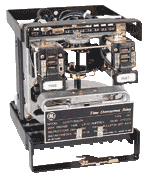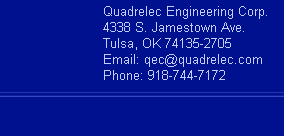Based upon 45+ years of experience in
performing and reviewing coordination
studies, it has become apparent that most of
the engineers performing such studies lack
the requisite basic knowledge to perform a
proper study.
Buying coordination software
and plotting time vs. current curves does
not make one a coordination engineer.
Unfortunately, coordination courses from the
software vendors do not begin to touch on
how to perform valid studies that
actually
achieve coordination.
This unique and comprehensive
course
will cover general and detailed principles
used in the protection of medium and
low voltage power systems and the principles
necessary for proper performance of a
protective
device coordination study. Knowledge of protective
device operating characteristics and their
impact on arc flash
hazards
within a system are crucial. This course is
designed to answer your needs as a designer
of power systems related to the integration
of protection, proper application, function,
and safe operation of electrical systems.
characteristics and their
impact on arc flash
hazards
within a system are crucial. This course is
designed to answer your needs as a designer
of power systems related to the integration
of protection, proper application, function,
and safe operation of electrical systems.
Why is this course unique
and necessary to be up-to-date in
coordination techniques?
- Probably the only
course in the industry which addresses
what it truly takes to provide a "fully
selective" system of protective devices.
- Many of the concepts in this course have
affected national standards such as
those of NEMA and the NEC
- Covers
commercial, industrial, and utility systems
and protective devices up to 35-kV
- 8+ hours are
dedicated to coordination analysis of
different types of actual systems submitted by
the students or selected from similar
systems encountered by the instructor.
- Coordination of
critical systems fed by generators, UPS,
and inverter systems
- Arc flash study
concepts combined into course along with
the effects of
arc blast hazards and its impact on
coordination studies.
- Recent arc flash
hazard findings for 1ph and 3ph systems 250-V and
lower presented
- Impact of distributed energy
sysytems (DERs) such as solar and wind on
system protection and coordination.
- NEC
Article 240.92 changes allow for
engineering design of feeder taps using
principles of this course without blindly
applying older tap rules.
- Integrates the
latest use of current-limiting breakers
for achieving coordination and techniques
to ensure coordination of current-limiting
fuses with breakers
- All computer software used for device
coordination plot time vs. current curves
but are they valid and do the plots tell
us what we need to know?
- This course does
not teach software. Instead, it teaches
what all of the other courses leave out
including "What time-current curves cannot
tell you about coordination."
- Most courses do not teach
fundamentals or actual equipment and protective device limitations that
impact coordination
- Class sizes are kept small to optimize
your personal learning experience
- Information not limited to a specific
manufacturer of equipment or software
- Hands-on experience in relay and
breaker operation plus multi-tap transformer
impedance testing performed by
students in lab exercises
- Design "rule-of-thumb" tips provided
to minimize system redesign
- Information exceeds that of any other
similar course on the market
- Previous
attendees included engineers from large
manufacturing and petrochemical plants,
utility companies, government agencies,
nuclear and other power generation plant
engineers, and even electrical equipment
manufacturers such as General Electric
and ABB. For attendee comments and feedback
click here.
Course
Structure
Although the depth of the material is
geared for electrical engineers, many plant
electrical technicians responsible for
system protection and equipment have found
the material extremely useful in their job. More details are available
in the course
brochure
or in the
topical listing.
This course is structured to
provide information and methods needed to
conducting a short circuit and protective
device coordination study for both low
voltage and medium voltage distribution
systems.
Materials include tips and techniques not
found in other courses or books on the
subject.
These tips are
guaranteed to save you time and avoid
mistakes in your system designs. In addition
detailed coverage of proper
protective
device selection and application is
provided. The
instructor's
45+ years of experience in
commercial, industrial, government, and utility systems will
guide you in techniques that can be
used during the initial layout of a one-line
diagram so the protective devices in a
system can be coordinated. Because the
instructor is a full time practicing
engineer, you will be able to draw from the
instructor's current real world experience
in these topic areas.
Unlike other industry courses, It is
not training in how to use a specific
type of software. You
do not even need to bring a computer to
class. Whether you use such as
EasyPower, EDSA, SKM,
ETAP, or Cyme, or a "stubby pencil", you will benefit from this
course. Twelve hours are devoted on the
fourth and fifth days to actual
practical examples of system design with
coordination as the goal.
The practical examples have been taken from
actual power systems including those brought
to class by the students, not "canned"
systems typical of other courses.
Students will make all technical decisions
during the practical examples.

During
short lab exercises,
students will test actual relays or
breakers and thus receive "real world"
experience in how digital relays,
electro-mechanical relays, and molded-case
breakers perform against published curves.
Additional
lab exercises will analyze transformer
percent impedances to provide the
students expanded knowledge of per-unit
calculation procedures and fundamentals.
These exercises will be especially useful
when transformers are set on taps that do
not match the system nominal voltage.
Course
Materials
The student will receive a 200+ page
workbook that exceeds the quality of training manuals of
most courses of this type. Unlike most
courses, each workbook
page
contains a single lecture slide and
appropriate comments by the instructor
designed to facilitate and minimize note taking by the
student and to provide a more useful future
reference.
Lastly, each attendee will receive a
CDROM/DVD that captures all of the audio and
projections of the lecture during the
last day during the sample problem sessions.
Typical Daily
Schedule
Days 1-3: Lecture
Day 4 and 5: Actual sample problems for
various types systems in which students
analyze and coordinate the protective
devices in the chosen systems. Sample problems are
extracted from those submitted by students
or from actual systems encountered by the
instructor. The samples are designed to
expose the student, to the maximum extent
possible, to real world problems. In
addition, time is devoted to per-unit
calculations, relay test result analysis,
and current transformer burden calculations
using real world equipment.
A CD is provided that
captures all on screen audio and video
during days four and five.
Continuing
Education Credits
3.3 CEU's (33 PDHs) will be provided for through the
I.E.E.E. Education Program
for those
students needing professional continuing
education credits.
Price: $2,200.00 (US)
(There is a
10%
discount
available for I.E.E.E. members
registering at any time in addition to any
other discounts offered. See registration form
for early registration and other discounts. )
Refresher
or CEUs Needed?
If you took this course many years
ago and need a refresher or expansion
of your knowledge based upon your
experiences in performing studies,
you
can attend the course at a much lower
rate.
The
full
CEUs would also be available for the
refresher because new equipment
appears all of the time to solve
coordination problems and industry
criteria and codes are constantly
changing. See the registration form
for information and pricing.
See
"Training" webpage.
Participant slots are limited to 12 to maximize
student involvement.
Payment is not required until one
week prior to the course. Registration
merely guarantees your space in the class.
_____________________________________________________
The course runs from 8 AM Monday
through 10 AM Friday.
See course information
for CEU/PDH's. If you cannot register
for the planned dates, please send us an email of your
intentions or date preferences.
______________________________________________________
Do you have your own preferred dates and
locations in mind? If so, contact us.
______________________________________________________
T
he above courses. related to
fundamentals of power system design. are planned for the
calendar year shown and are joint effort
training offered by Quadrelec Engineering,
the I.E.E.E. Educational Program,
and at times EasyPower Inc. of Portland Oregon,
developers of the
EasyPower® software.
The courses are designed to give the
student working level engineering skills in
both the topic area. For a current course brochure
click
here.
To optimize your
training funds, on-site training at
your facility is also available for seven or
more students. Course material for on-sites
can be customized to your needs with minimal
cost increases in the per-student published
prices. Training at sites outside of the
U.S. may have other requirements.
[$$]
The
classes noted with this symbol are
coordinated with EasyPower Inc. and subject to
their training dates. Check the
EasyPower Support/Training website
for
EasyPower® hands-on classes that may be
offered the week after these courses.
Attendance at these sessions will optimize
your training experience. During our course
you will learn the analysis fundamentals
prior to learning to use the software.
This will enhance your learning experience
at the EasyPower Regional Hands-On session.
Previous participants have included
students from the following industries:
Pulp and Paper, Petrochemical, Major Manufacturing
Plants, U.S. Navy, U.S. Army Corps of Engrs.,
FAA, nuclear generation (Canada),
nuclear material processing plants, hydroelectric generation, numerous consulting
engineers, utility companies,
international oil and gas
companies, ASCO, Kohler, and General Electric.
EasyPower
® by
EasyPower Inc.,
Portland, OR
I
EEE CEU's: IEEE
Continuing Education Programs are
peer-reviewed by content experts. This peer
review guarantees both quality of the
technical content of learning materials, as
well as adherence to IEEE’s strict criteria
for educational excellence. All programs
that pass this strict process are entitled
to award IEEE Continuing Education Units (CEUs),
recognized as the standard of excellence for
continuing education programs in IEEE’s
fields of interest.



